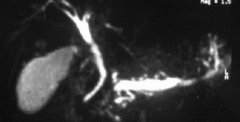读医学网
2012年美国胸科学会临床实践指南:支气管肺泡灌洗液细胞分析在间
发布时间:2014-05-20 09:25 类别:呼吸系统疾病 标签:research Reynolds Newball tool 来源:丁香园
Bronchial irrigation with saline solution via a catheter passed through a rigid bronchoscope was first reported in 1927, and the term “bronchial lavage” was coined by Stitt in 1932. Although initially used as a therapy for septic lung disease or pulmonary alveolar proteinosis, lung lavage was subsequently employed to study lower respiratory tract immunity in various animal models in the 1960s and applied to the study of the human lung in the late 1960s and 1970s. A seminal article reporting the application of BAL to the study of secretions obtained from the human lung was published in 1974 when saline lavage of a portion of the lung via a flexible bronchoscope was introduced as a research tool by Reynolds and Newball . Saline lavage of a defined area of the lung became known as bronchoalveolar lavage, and hundreds of articles on BAL appeared in the literature in the 1980s and 1990s as clinical use of the flexible fiberoptic bronchoscope expanded.
The technique rapidly gained acceptance, and a large number of centers began using the technique to obtain cells and proteins from the lower respiratory tract. However, many centers used their own technique for performing lavage, and concern arose that differences in technique could lead to significant differences in results obtained from BAL fluid analysis and the interpretation of such findings. Consequently, several groups established standardized methods for performing BAL. The European Respiratory Society has provided statements on the use of BAL for the clinical evaluation of patients with ILD including recommendations concerning the technical aspects of performing BAL and on standardization of the BAL procedure, and a multi-center, NIH-sponsored investigation conducted under the auspices of the American Thoracic Society in the United States examined BAL cell profiles in patients with ILD and normal volunteer subjects. Specific recommendations regarding various aspects of performing and analyzing BAL were subsequently published. However, these statements were published prior to the use of high-resolution computed tomography (HRCT) of the chest as a routine clinical tool for the evaluation of patients with ILD and before the current classification of different forms of idiopathic interstitial pneumonia (IIP) had evolved to become the system that is currently accepted. Despite the promotion of BAL standardization in Europe, the technique has never been standardized on a global basis, and considerable variation in technique and in analysis persists among bronchoscopists and analytical laboratories around the world.
- 猜你会喜欢....





